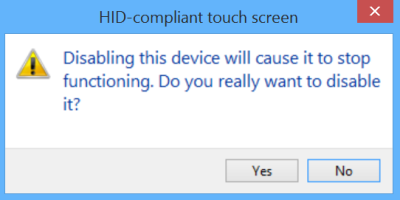

Steps to Permanently Disable Touchscreen 1. You will need to run the Registry Editor as Administrator because it makes changes to how Windows operates. If you don’t know exactly what each thing in it is for, don’t touch it and follow the these instructions exactly. If you edit the wrong thing you could cause your computer to stop working. For those who are not familiar with it (and to many who are familiar too), the Registry Editor can be a dangerous tool. You will need to use the Registry Editor. Luckily, there is a solution that remains in place after a major Windows 10 update. There is no setting in Device Manager to keep the touchscreen permanently disabled. Hence why I have had to try fixing this more than once. Once the touchscreen has been disabled, no more problem, right? Yes, there was no more problems trying to login with the touchscreen disabled… until Windows Update installed a major update and reset the touchscreen back to the default setting of being enabled again.

I managed to do this by once getting lucky enough to have time to enter the full password and another time by using an external monitor and switching screen modes to use only the external monitor.

I click back in using the mouse and ‘pass’ would be selected so when I type in ‘word’ it replaces what I already typed in.ĭisabling the touch screen in Windows 10 stops this problem but you first have to log in and disable the touchscreen from Device Manager. If I managed to touch in the password again, anything I had typed already was selected so typing again would replace what I had already typed in.įor example, if my password was ‘password’ ( not recommended to use for your password), I would type manage to type in ‘pass’ then the faulty touch would loss focus from the password. The problem is when you try to log in, the faulty touches on the screen, sometimes called ghost touches, continually take focus away from the password box. Why would you want to permanently disable a touch screen? It became a need for me when the touchscreen on my Dell laptop became defective, continually receiving faulty signals or touches on the screen without touching it.


 0 kommentar(er)
0 kommentar(er)
